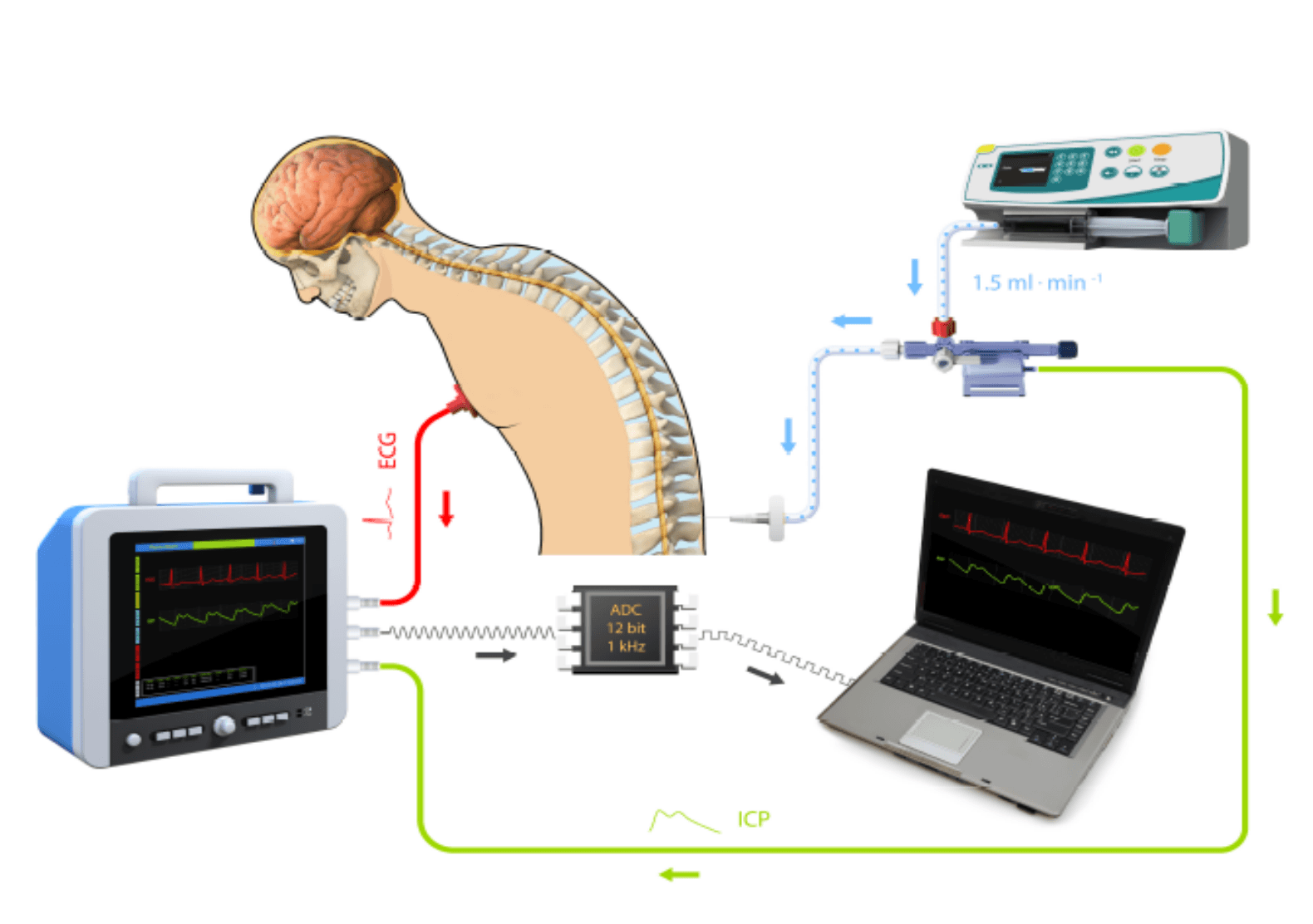Prediction of shunt responsiveness in suspected patients with normal pressure hydrocephalus using the lumbar infusion test: a machine learning approach
Citation: Mládek A, Gerla V, Skalický P, Vlasák A, Zazay A, Lhotská L, Beneš V Sr, Beneš V Jr, Bradáč O. Prediction of Shunt Responsiveness in Suspected Patients With Normal Pressure Hydrocephalus Using the Lumbar Infusion Test: A Machine Learning Approach. Neurosurgery. 2022 Apr 1;90(4):407-418. doi: 10.1227/NEU.0000000000001838. PMID: 35080523.
Machine learning (ML) approaches can significantly improve the classical Rout-based evaluation of the lumbar infusion test (LIT) and the clinical management of the normal pressure hydrocephalus.
We therefore decided to develop a ML model that would accurately identify patients as candidates for permanent cerebral spinal fluid shunt implantation using only intracranial pressure and electrocardiogram signals recorded throughout LIT.
Our cohort study included prospectively collected data of 96 patients who underwent LIT and 5-day external lumbar cerebral spinal fluid drainage (external lumbar drainage) as a reference diagnostic method. A set of selected 48 intracranial pressure/electrocardiogram complex signal waveform features describing nonlinear behavior, wavelet transform spectral signatures, or recurrent map patterns were calculated for each patient. After applying a leave-one-out cross-validation training-testing split of the data set, we trained and evaluated the performance of various state-of-the-art ML algorithms.
The highest performing ML algorithm was the eXtreme Gradient Boosting. This model showed a good calibration and discrimination on the testing data, with an area under the receiver operating characteristic curve of 0.891 (accuracy: 82.3%, sensitivity: 86.1%, and specificity: 73.9%) obtained for 8 selected features. Our ML model clearly outperforms the classical Rout-based manual classification commonly used in clinical practice with an accuracy of 62.5%.
